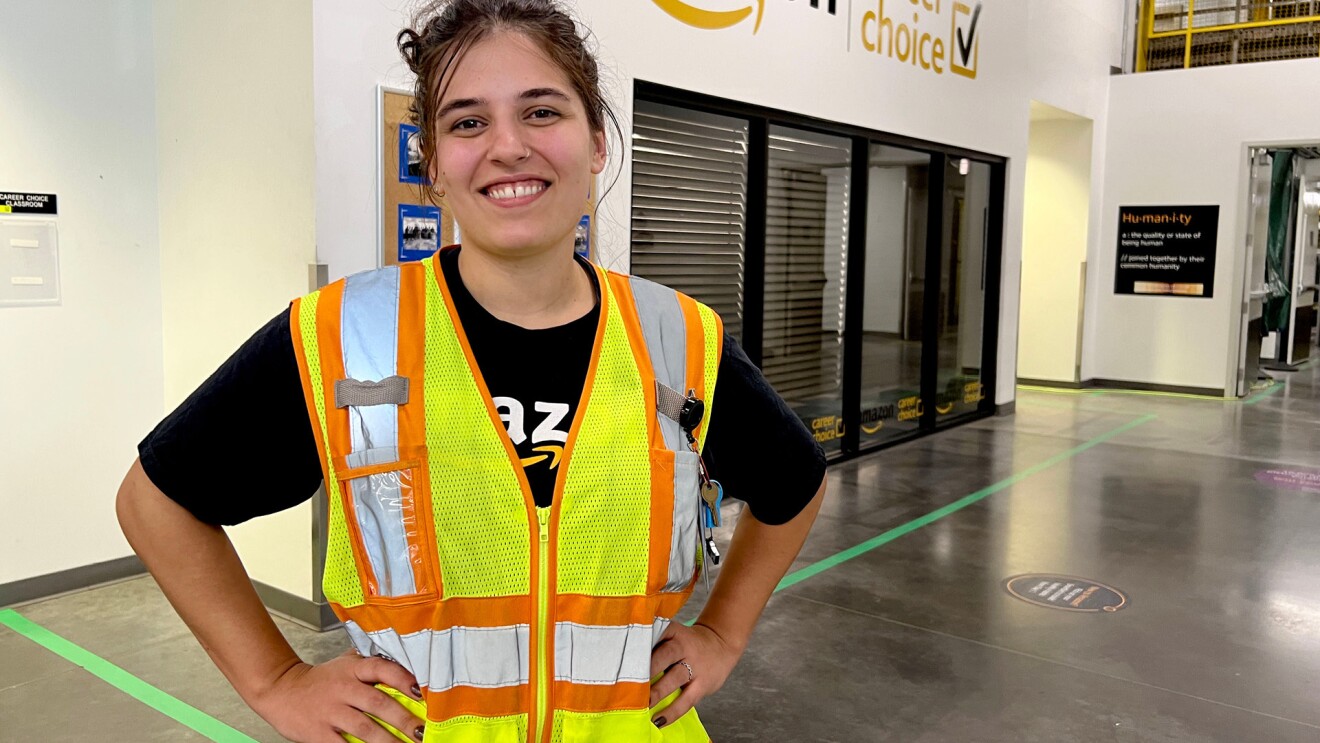As part of our efforts to continuously improve for our team, today we shared the results of our annual internal Tech Survey—which is sent to technology-focused employees across the company to understand their sentiment, experience, ability to innovate, and culture of customer obsession. The effort is driven by developers, for developers, and has been a part of Amazon’s builder culture for more than 20 years.
The survey was administered this year by the Amazon Software Builder Experience team, led by Eric Docktor. The team was formed in February to continuously improve the day-to-day experience of builders across the company and to empower individuals and teams to do the same.
Read the email Eric sent to employees (below) to learn more about this year’s results:
I’m excited to announce that the results of the 2022 Tech Survey are now available on the Tech Survey site. The Tech Survey is an important tool for how both the tech community—as well as individual teams—understand and continuously improve the experience for tech builders across the company. Over the years, the survey has changed a lot—the questions and job families that we include, the size of the community that participates, and the functionality we deliver to you to understand your results. But its focus has remained the same: to hear directly from the tech community about what’s going well and where there are opportunities to improve, and to empower teams to go make those improvements.
As you review the results with your team to identify your teams’ successes and areas for improvement, I wanted to share some high-level takeaways that stood out to me and the Software Builder Experience team (ASBX). This is the first year that ASBX has managed the Tech Survey (with ASBX just coming together in February 2022), and we are humbled by the increased response rate, with nearly double the participation rate this year compared to last year. We see that as a signal of rising engagement in the tech community and increased trust in our collective dedication to improvement. The ASBX team will continue to dig into the results over the coming weeks as we identify what’s working well and where we can continually raise the bar. I hope you will do the same with your team.
Some of the highlights of the survey include:
- We saw among the highest scores for “I enjoy working for Amazon” (86%) and “I recommend Amazon to others in my field as a great place to work” (81%) since the response options for these questions changed in 2019, and we saw the lowest-ever negative responses to these questions. This may be the biggest headline for me—we know we have a lot to do, and the ASBX organization is well aware of the repetitive work that some Amazon software builders must do in order to continue to delight customers. We’ve made it a focus across the company to keep getting better, and I’m inspired by seeing this result.
- Related, 91% of those surveyed feel encouraged to share their ideas, 74% feel confident that they can meet their career goals working at Amazon, and 91% report their manager creates an environment where they feel comfortable expressing their concerns.
- Respondents believe in their organizations and leaders, with 85% of respondents reporting that their managers seek out diverse opinions when making decisions and 82% saying their skip-level manager is an effective leader. We saw the highest-ever scores on other questions related to managers, including managers helping team members understand what is expected in their role, managers providing actionable feedback on performance, and managers clarifying how performance is evaluated. I’m very happy to see these results, because I know from my own Amazon experience that this is hard work. I encourage managers and teams to dig into their own results and don’t take this as a declaration of victory. It takes work every year!
- Customer focus remains high, with 86% of respondents saying their teams are working on the right things for customers and 75% saying they are truly innovating for customers.
While there are many areas to celebrate, we will continue to focus on areas where we have work to do.
While 74% of respondents said they can meet their career goals at Amazon, and 10% are considering an internal transfer to further develop themselves, we also see that 5% are considering leaving Amazon in the next six months. Among that 5%, about half cited base pay as their primary concern. As you’re likely aware, earlier this year Amazon announced increases in salary bands across many job families, including an increase to the U.S. base pay cap. The Compensation team has learned a lot based on feedback from that announcement, and the team regularly assesses data to reflect changes in the marketplace as they continue to review compensation packages across Amazon.
We also heard that bug fixes cause frustration for some teams, with about 22% of those who write code reporting that bug fixes usually or always interrupt their work. We heard a desire to streamline processes and maintenance work so that builders can spend more time on innovation. We are working to make that easier, or automated, for the software you consume (see more below). And if you’re in a team that sees these interruptions related to code produced in your team, we hope you use these results as a call to action to invest in your own test automation and quality processes.
The next step in the Tech Survey cycle happens at the company, org, team, and individual levels. We expect teams and leaders to dig in to these results and learn where they’re leading (and maybe sign up to host a Principals of Amazon talk to show us how!), and where you have opportunities to improve in your own teams.
From a company perspective, the ASBX team will keep looking through these results for feedback on our own roadmap—and for areas where we will advocate for improvements across the company. We also look at how we, in ASBX, can directly deliver improvements. To that end, I wanted to share some key wins since ASBX’s founding in February:
- Year-to-date, we’ve automatically resolved 20% of Blocked Software issues—software updates that are so important to make urgently that teams are blocked from deploying anything else before the update is complete—up from 0.5% in 2021. Software builders didn’t lift a finger to incorporate these upgrades into their applications. We made a big bet on this in 2022 as an area where we thought we could significantly reduce toil across Amazon, and we’re thrilled with our early results. We will continue to drive this program to increase the percentage of Blocked Software issues resolved automatically.
- We launched the pipelines efficiency dashboard in June to show teams across Amazon how healthy their pipelines are and where there are opportunities to improve pipeline health. So far in 2022, the percentage of pipelines regularly merging from the Live Version Set has risen from 61% to 83%. Software builders have also used the dashboard to find and fix pipelines that stall, which has reduced total manual interventions in stuck pipelines by 6.6%. To put that in context, that is almost 17K times per week that software builders were not interrupted from building to address administrative pipeline issues.
Those two wins really highlight the two major ways the ASBX organization is driving improvements for builders. In some ways, like automated patching, we’ll launch things that will immediately improve things for you. And sometimes, like fixing stuck pipelines, we can’t fix it for you, but we can improve the visibility so you know where to invest to improve your team’s builder experience. We’ll keep innovating to make you more efficient, like we did by improving search in SIM Ticketing, centrally handling upgrades to Amazon Linux 2 for 1.8M hosts so you didn’t have to, and reducing Apollo deployment time by 75% for large fleets. And yet, we know there’s more to do, and we’ll use what we learn in the Tech Survey (and other feedback forums) to influence our roadmap.
I hope you and your teams make some time to digest the tech survey to learn what improvements you can make, as well. I look forward to seeing what we all do with it!
Let’s keep building together,
Eric
Trending news and stories









